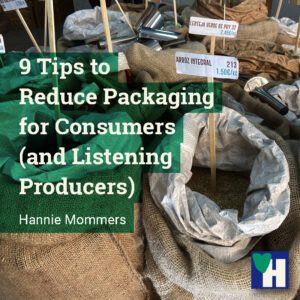
The first time I wanted to order at Amazon I waited until I had 5 items I needed. I could have saved myself the trouble because these items were delivered on several days by 4 different deliverers. And the amount of plastic I had to throw away afterward was HUGE.
Instead of complaining, being wiser after some eye-opening conversations I had with businesses about customer service, I decided on my own strategy to reduce packaging: “I used my feet” and searched for more environmentally aware shops.
Don’t you love that expression? I heard it years ago at a marketing seminar: “Customers are not without power, they can use their feet and go somewhere else, and you’ll lose business to somebody else. Moreover, your image is damaged.”
I have made it a habit to not only complain about the way things are, yet actively investigate what I can change myself. Feeling in control is a much better sentiment than feeling powerless.
Some of the links are affiliate links. As an affiliate associate, we earn a commission when you purchase any of the products offered through the shared links at no extra cost for you. This helps us maintain this website.
Table of contents
- 1 Responsibility for all aspects
- 2 Reduce packaging
- 3 What can we do ourselves to reduce all that waste?
- 3.1 #1 Avoid prepackaged foods
- 3.2 #2 Choose retailers who use reusable or recyclable materials for packaging
- 3.3 #3 Buy in bulk
- 3.4 #4 Reuse packaging products
- 3.5 #5 Buy unpackaged fruits and vegetables
- 3.6 #6 Second-Hand goods
- 3.7 #7 Barter and/or trade items
- 3.8 #8 Choose the brand with the least packaging
- 3.9 #9 Look for deposit-return packages
- 4 Make it easy for consumers
Responsibility for all aspects
There was a time I had to send out goods as well. As a graphic designer, I had to deliver books and stationery to my clients or let my printer take care of it. And as a ceramicist, I sent clay objects to customers or I had to transport them to the exhibition spaces.
So I do have an idea about the troubles a sender has when goods have to be shipped. You want them to arrive in one piece and undamaged.
Yet, as a designer, I also saw the challenge in doing that in a responsible way. That’s not just a burden, it’s also a creative task.
Reduce packaging
Isn’t it amazing how much packaging it takes to ship something? When something is packed in a box, it often also has shrink-wrap. And something to fill the empty space between the box and the item which can either be bubbles, foam peanuts, wrinkled kraft paper, or shredded paper.
Usually, you can do nothing but throw the wrappings in the garbage. And how about the packaging of food and items in your grocery store? I have seen as many as 3 different plastic wrappings on one packet of cookies!
Related: How do we Personally Try to have a Sustainable Lifestyle?
What can we do ourselves to reduce all that waste?
#1 Avoid prepackaged foods
Buy a couple of drinking cups with lids, made of bamboo or metal, so you don’t have to bring juice packs or juice boxes to the park. I had an endless discussion with my son about the drink packets he gave to our grandchildren. “But the kids love those”.
It turns out they also love a bright-colored cup. Buying big bottles, not only prevents waste, it saves money as well. And those bottles don’t have to be plastic, there is a lot of choice of juice in glass bottles.
#2 Choose retailers who use reusable or recyclable materials for packaging
Also, bring your own reusable containers and shopping bags. It’s not that long ago that almost everybody used the thin plastic bags that were available at the checkout. Nowadays, those plastic bags are either forbidden or cost money. Change is possible once everyone puts in a little effort, isn’t it?
Additionally, some retailers who manufacture and distribute processed foods are beginning to package them in reusable and/or easily recyclable containers to minimize waste.
#3 Buy in bulk

Whether you’re buying cereals, rice, herbs, or nuts at your grocery store, when you buy in bulk you cut down on packaging. The same if you buy books online. Think about it – if you buy one book at a time online then you’re going to receive a box for each book and all the packaging that goes along with shipping that item.
Buying in bulk can either mean you buy bigger boxes or bottles, or you can fill your own jars and containers from a huge bulk package the store bought.
#4 Reuse packaging products

Materials like paper, wrapping paper, plastic bags, tins, and filling material can be reused for packaging. Plastic containers can serve as plant pots for seedlings. Egg cartons are also ideal for that. If they are not painted, you can put them with the seedling in the ground so you don’t damage the roots.
#5 Buy unpackaged fruits and vegetables
Bananas have their own jacket, why would they need a plastic one on top of that? Cucumbers last longer in a plastic shrink wrap, yet if you buy them from local farmers they don’t need it. An added advantage is that the goods don’t have to travel far which saves on pollution as well.
#6 Second-Hand goods
Used products rarely come packaged. You just pick them up as they are from the thrift store or the charity shop. By the way, bring your own rarely used goods there as well. It can save a lot of space in your home.
#7 Barter and/or trade items
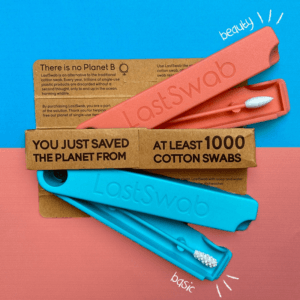
Barter and trade in products is a great way to save money and conserve resources. Many people form book exchange groups to save money and materials simply by sharing books. And some people organize social groups to share clothes and other items.
I guess almost every country has a secondhand stuff platform on the internet. Online possibilities are also Craigslist and Facebook Marketplace.
Have a look at the Freecycle Network. Their motto is “Don’t throw it away, give it away” with the objective to keep good items out of the landfills.
#8 Choose the brand with the least packaging
When you are comparing similar items from different brands, choose the one with the least packaging.
#9 Look for deposit-return packages
Bottles, tins, containers, or crates are examples of packaging that can have a deposit return. When I still had my office I could return my printer cartridges and get a bit of money for them in return. Our Brita filters don’t require a deposit, but we can send them back anyway for reuse.
Related: Easy Sustainable Living Ideas – Pick 1 or 2 and Start Living Green
Make it easy for consumers
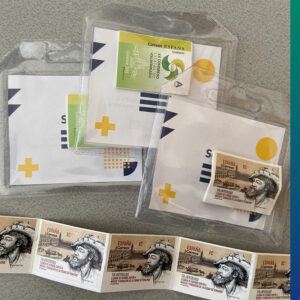
We as consumers and customers cannot do everything alone. Producers also have a big responsibility. And of course, there are not just bad producers. A lot really put in an effort to make things better.
The How2Recycle Label gives us an indication of how to recycle materials. This is an American organization, but the EU has similar regulations.
What I would like is consistency in the materials of the packaging. I hate cardboard boxes that are sealed with plastic tape. Why not use paper tape instead, so the recipient doesn’t have to rip everything apart to be able to recycle everything properly.
Lots of plastic waste can’t be recycled because the composition differs or cannot be traced. The same with clothes. It’s almost impossible to recycle textiles because of all the different materials used.
In conclusion, there is a responsibility for both consumers and producers to minimize packaging and move to zero waste.
Do you have additional ideas to minimize package waste? Tell us in the comment box below.

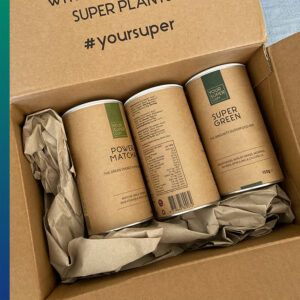
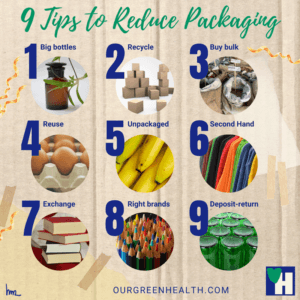
These have been very useful tips. I have already been avoiding buying from brands that use excessive plastic in their wrappings. But I would like to also follow some of your other suggestions, such as choose retailers that use reusable materials.
I also feel that sharing your post will encourage my friends to follow your tips too.
That would be a marvelous gesture, Ann, to share these tips with your friends. Thank you so much. The more people we can inspire the better. When a lot of people try to minimize the waste, even for just a little bit, it would be so helpful against that garbage belt we are making of our earth, don’t you think?
There is a change going on, so that is good. Even though the reason is, that companies just see money in positioning something as ‘green’, there are more and more products that are not packed in all kinds of layers of plastic.
All we need now is the virus to get out of the world, so that all those – so-called hygienic – plastic products such as gloves and masks no longer have to be used, and we can go back to nature. 🙂
Thanks for your reaction, Ann, and take care.
I like the way you put it, you used your feet to find solutions rather than complain against the giant Amazon. Packaging waste is one of the highly unfriendly and hazardous substances in our environment. I love the way you approach it and reduced the number of materials used for packaging. I always ensure I use deliveries from decomposable materials and I ensure they are properly disposed of after use.
Marvelous, Parameter, that’s good to hear! And thanks for the compliment on my avoiding the Big A. 🙂
We used to live in the Netherlands where it was a bit easier to reduce the packaging. Over here in Spain, it’s way more difficult. People are not very willing yet to think about what we are doing to the world. And neither are the shops as a consequence of that attitude. But my husband and I hope to set a change in motion by keeping doing what we preach.
How is that in your country? I remember when we were traveling in the US how much plastic we used. Hopefully, there is a shift in thinking going on as well.
Thanks for your reaction and all the best.
I love this post as I absolutely hate the amount of unnecessary packaging materials that are used. Why put a bunch of bananas on a polystyrene tray and wrap it in plastic, when it already has nature’s best packaging?
I have been taking my own reusable shopping bags to the supermarket now for several years, and a year ago started using reusable produce bags. I also have a reusable metal water bottle and no longer buy any bottled water. I fully agree that we can vote with our feet.
I have stopped going to my one local supermarket because the cashiers kept on telling me that I had to use plastic bags, and not my own reusable bags.
Precisely, Line, even the argument of hygiene is redundant for bananas. Or other fruits and vegetables that we peel anyway before we eat them.
It’s crazy they kept telling you to use the plastic bags. That reminded me of a story I read yesterday on a Zero Waste blog about a girl being desperate that she tried to reduce her waste by bringing her own takeaway cup for coffee. The barista simply made the coffee in the plastic cup and then poured it into her reusable cup. Then she threw the plastic thing in the trash can. Hopeless.
Anyway, let’s try to stay positive. As long as we have a choice to move to another supplier, we’re good, aren’t we? 🙂
Thanks for your comment and take care, Line.
Yes, Hannie! I completely relate to your article! I’m not too fond of it and all the packages, and I always hope for companies who don’t use so many plastics. Because I order mainly organic, sustainable items, I actually have reduced all the plastics; they don’t use them.
In the supermarkets, I try to buy unwrapped products or glass. I even thought I take the organic plastic bags with me and leave the plastics in the supermarket.
I am often going to organic shops and markets, and some products are in glass, so I don’t feel that bad. But cleaning glass is another bad thing; they use so much precious water. Ach, Hannie, it is not that easy avoiding all the waste, but I always try my best. If we all contribute to a better environment, we will force the supermarkets to stop with all the plastics, but as long as consumers don’t care, they don’t care. Why should they change?
However, we do the best we can every day, trying to live sustainably.
Thank you again for a great article, Hannie! 🙂
Walk into any organic store and look if there is absolutely no plastic. I yet have to encounter that store. That’s what amazes me most, that organic stores are focusing on organic on one hand and have absolutely no attention for the used plastic. So I am curious to know which stores you have found, Sylvia?
Two years ago there was a new store in our village. It looked brilliant. OK, the bulk bags were made from plastic, but they would be used again. No matter how much I am opposed to plastic, I am also realistic enough to know we can’t ban all plastics from our lives at the moment. Simply because there is so much already.
We could bring our own jars to fill which was great. I was relieved, I thought I finally had found a store with an eye for single-use plastic. Can you imagine my disappointment when I asked if they had toilet paper and they handed me a 4 pack wrapped in plastic? Grr.
As far as the cleaning water concerns, it depends on how they handle it. The cradle-to-cradle companies collect the water and return it through filters so that there is not much loss.
Anyway, I am glad sustainability is also very important to you and it’s marvelous that you go the extra mile for it. Step by step the sustainability movement will grow, I am sure. 🙂
Thanks for your comment, Sylvia, and take care.